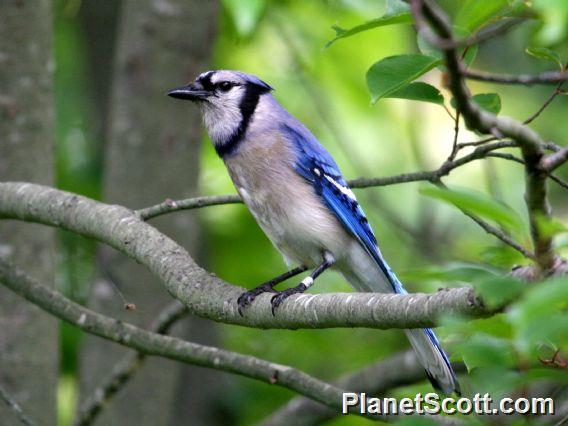Blue Jay (Cyanocitta cristata)

Blue Jay (Cyanocitta cristata)
×


Blue Jay (Cyanocitta cristata)
About Blue Jay (Cyanocitta cristata)
- Kingdom: Animals
- Phylum: Chordates
- Class: Birds
- Order: Perching Birds
- Family: Jays and Crows
The blue jay is a passerine bird in the family Corvidae, native to eastern North America. It lives in most of the eastern and central United States; some eastern populations may be migratory. Resident populations are also in Newfoundland, Canada; breeding populations are found across southern Canada. It breeds in both deciduous and coniferous forests, and is common in residential areas. Its coloration is predominantly blue, with a white chest and underparts, and a blue crest; it has a black, U-shaped collar around its neck and a black border behind the crest. Males and females are similar in size and plumage, which does not vary throughout the year. Four subspecies have been recognized.
Source: Wikipedia
Visits
-
1983-06-06
Elgin, United States of America -
2001-03-09
Ocala National Forest, United States of America -
2007-06-14
Cape May National Wildlife Refuge - Deleware Bay, United States of AmericaWoodcock Trail. -
2007-07-21
Hawthorne Hill Nature Center, United States of America -
2009-05-05
Elgin - Bluff Spring Fen, United States of America -
2009-05-08
Burnidge Forest Preserve, United States of America -
2010-02-01
Elgin - Bluff Spring Fen, United States of America -
2011-10-08
Crabtree Nature Center, United States of America -
-
2012-07-08
Necedah NWR, United States of America -
2012-07-08
Elgin, United States of America -
2012-07-09
Sax-Zim Bog, United States of America -
2013-04-14
Austin, United States of America -
2013-04-17
Matagorda County Birding Nature Center, United States of America -
2013-04-19
Bolivar Peninsula, United States of America -
-
-
-
-
-
-
-
-
-
-
-
-
-
-
-
-
-
-
-
-
-
-
-


